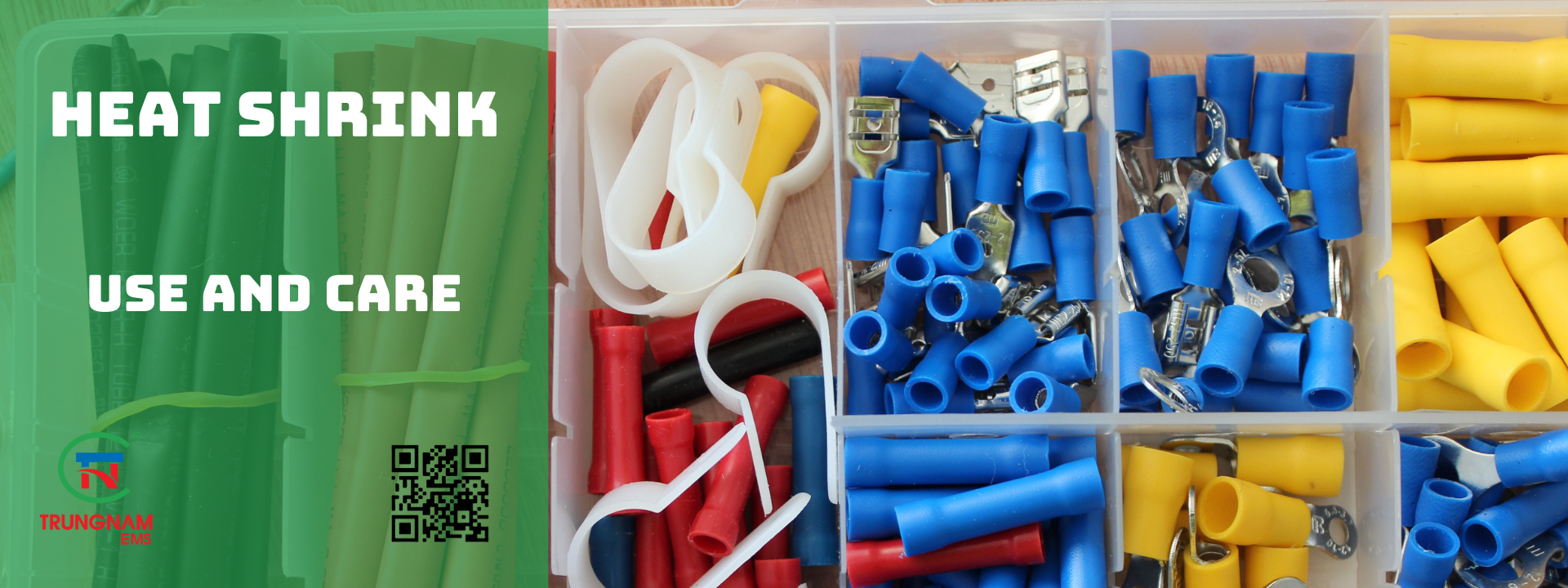Heat Shrink: Use And Care

In order to protect the environment, wires or cables are encased or covered when using high temperature heat sink tubing. You may also call them “heat shrink sleeves” if you choose. As many people believe, the process of heat shrinking isn’t difficult. In this case, you’ll need one. Insert your wire, then warm the sleeve to get it ready for insulation. In the market, there are several shrinks as well.
In this post, we’ll talk about how to use heat shrinks, what to keep in mind while heating them up, and the many kinds that are available.
What Does Heat Shrink Tubing Mean?
This may be compared to a rubber sleeve that contracts when exposed to heat, most notably when heated to a temperature of roughly 200 degrees Fahrenheit (90 degrees Celsius), which is considered the heat shrink temperature. In an effort to permanently seal what it is covering, it immediately shrinks and stays smaller.
Why the Use of High Temperature Heat Shrink Tubing is Important
Heat shrink tubing features some benefits. Let’s consider them:
- Wire protection is adequate against risks like as abrasion and low impacts.
- Insulation, both electrical and thermal.
- Creates a defense system against pollutants such as water, dust, oil, acids, and water.
- Complex networks bundle cables to keep them neatly arranged.
- Boosts strength to avoid cables and wires from being put under stress.
What materials and temperatures are needed for heat shrink tubes?
For any heat-shrinking tube, polyolefin is the most typical material. This polyolefin is a very resilient substance with a high temperature heat shrink threshold that is beneficial in applications requiring a high heat shrink temperature for functioning, such as in industrial, mechanical, and manufacturing environments. Railway, aircraft, electronics, and the military are among the industries that typically employ polyolefin.
There are several advantages of polyolefin material :
- Quick shrinking
- Great durability
- High flexibility
This heat shrink tube has a temperature range of around 100 degrees Celsius, although it can tolerate temperatures of about 135 degrees Celsius.
PVC
Polyvinyl chloride is the material used to make shrinks. It can tolerate temperatures of roughly 105 Celsius. The shrink is available in several colors and ranges in price from 10% to 50% cheaper than Polyolefin shrink. In addition to this, they have improved abrasion resistance and strength.
FEP (fluorinated ethylene propylene) Heat Shrink Tube
Fluorinated ethylene propylene is used to make the shrink tubes. This is quite strong and has the capacity to endure any significant strain. The heat shrink temperature of the tube is also around 180 degrees Celsius, although it can endure extremely steady temperatures between 200 and 205 degrees Celsius.
PVDF Heat Shrink Tube
Due to its excellent resistance to impact, cold flow, and abrasion, this type of heat shrink tube is well recognized. It is translucent and has a 175 degree Celsius minimum heat shrink tube temperature.
Elastomeric Heat Shrink Tube
Elastomers are used to construct the heat shrink tube. This class of polymers exhibits both elasticity and viscosity (elastoviscosity). This material has a 2:1 shrink ratio and can handle high heat shrink tube temperatures of about 150 degrees Celsius.
In conclusion, a heat shrink tube is crucial if you want to have excellent protection for cables and wires. Additionally, before you decide to purchase one, make sure you verify its major characteristics again. In addition to this, there are several heat shrink tunes that you need to take into account. Please get in touch with us right away if you require additional information on any of the topics we have discussed. We are always delighted to be of service.


